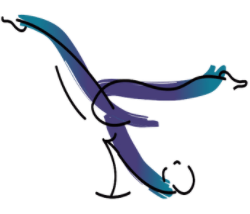Sciatica Exercises to Avoid
Sciatica is a common condition that involves radiating pain along the sciatic nerve. People who suffer from these symptoms often feel a tingling, burning, or numbing sensation in the lower back, through the hips, and down the legs. Although you can do several activities and stretches to ease your pain, you should also be aware of what sciatica exercises to avoid.
What Not to Do if You Have Sciatica
We all know the benefits of stretching the muscles so they can be loose and limber. Nerves, such as the sciatic nerve, do not like to be stretched. Several activities can target and stretch the sciatic nerve, causing discomfort for those already suffering from sciatica. Below are some exercises you should avoid if you don’t want to trigger sciatic nerve pain.
Double Leg Lifts
Double leg lifts are beneficial for strengthening your entire core. It involves lying on your back and lifting both legs off the ground simultaneously. Double leg lifts can also strengthen the back if you do them correctly.
Why you should avoid this exercise: Double leg lifts can aggravate sciatic nerve pain, especially if you have a weak core. This makes your lower back responsible for supporting the weight of your legs, which can increase the risk of sciatic nerve pain and a herniated disc.
Heavy Weighted Squats
Many people enjoy heavy weighted squats because it’s known to strengthen the lower body. This compound exercise develops the leg and glute muscles while working other areas, such as the hamstrings and adductors.
Why you should avoid this exercise: Squatting can further aggravate sciatica, especially if you’re doing weighted squats. The extra weight can increase pressure in your lower back and legs. People with sciatica will have better luck doing air squats, ensuring their back is in a neutral
position.
Leg Circles
Leg circles are a common exercise used in Pilates. It involves raising your legs and rotating them in a circular motion. Leg circles are beneficial for strengthening the abdominal muscles, stabilizing the pelvic lumbar, and promoting healthy hip joints.
Why you should avoid this exercise: Despite these benefits, leg circles aren’t recommended for those suffering from sciatica. This exercise suddenly stretches your hamstrings, which can aggravate the sciatic nerve and cause pain. The supine position also puts extra pressure on your lower back, especially if you aren’t using the correct form.
Burpees
Burpees are a common high-intensity exercise that works many of the major muscle groups. It’s a two-part exercise that involves a pushup and a jump squat. People do burpees to burn calories, boost cardio, and build strength and endurance.
Why you should avoid this exercise: Not only is a burpee a repetitive exercise, but there are also two points during the move where your back is stretched – during the pushup and the leap. Both factors can aggravate the sciatic nerve and put unnecessary stress on your back and hips. Those with sciatica should avoid burpees or any other high-impact exercise.
Forward Bends
Commonly performed in yoga, forward bends are also used during cool-downs after physical activity. They can be performed seated or standing, and all you have to do is reach for your toes while keeping your legs straight.
Why you should avoid this exercise: Forward bends, whether seated or standing, will stretch the spinal cord and hamstrings. Since the sciatic nerve also runs under the hamstring muscles, you’ll also be stretching that, which can trigger symptoms.
Bent-Over Rows
People who do bodybuilding and powerlifting may be familiar with the bent-over row exercise.
To do this move, you stand bent over while holding dumbbells in each hand. You’ll then raise your arms and shoulders back until the dumbbells are chest-height. Bent-over rows are beneficial for back and arm strengthening.
Why you should avoid this exercise: Bent-over rows require a certain form, and it’s too easy for people to round their backs during this exercise. Using this improper form makes you more likely to strain or injure your back, triggering sciatica.
Knowing What Sciatica Exercises to Avoid Can Help You Live a Pain-Free Life!
If your sciatica isn’t improving, you might want to avoid these exercises known to trigger symptoms. Gentle stretches that don’t target the sciatic nerve can help you manage symptoms so you can be ready to tackle the day without discomfort!
https://www.stretchzone.com/blog-posts/what-exercises-should-i-avoid-if-i-have-sciatic-pain/


